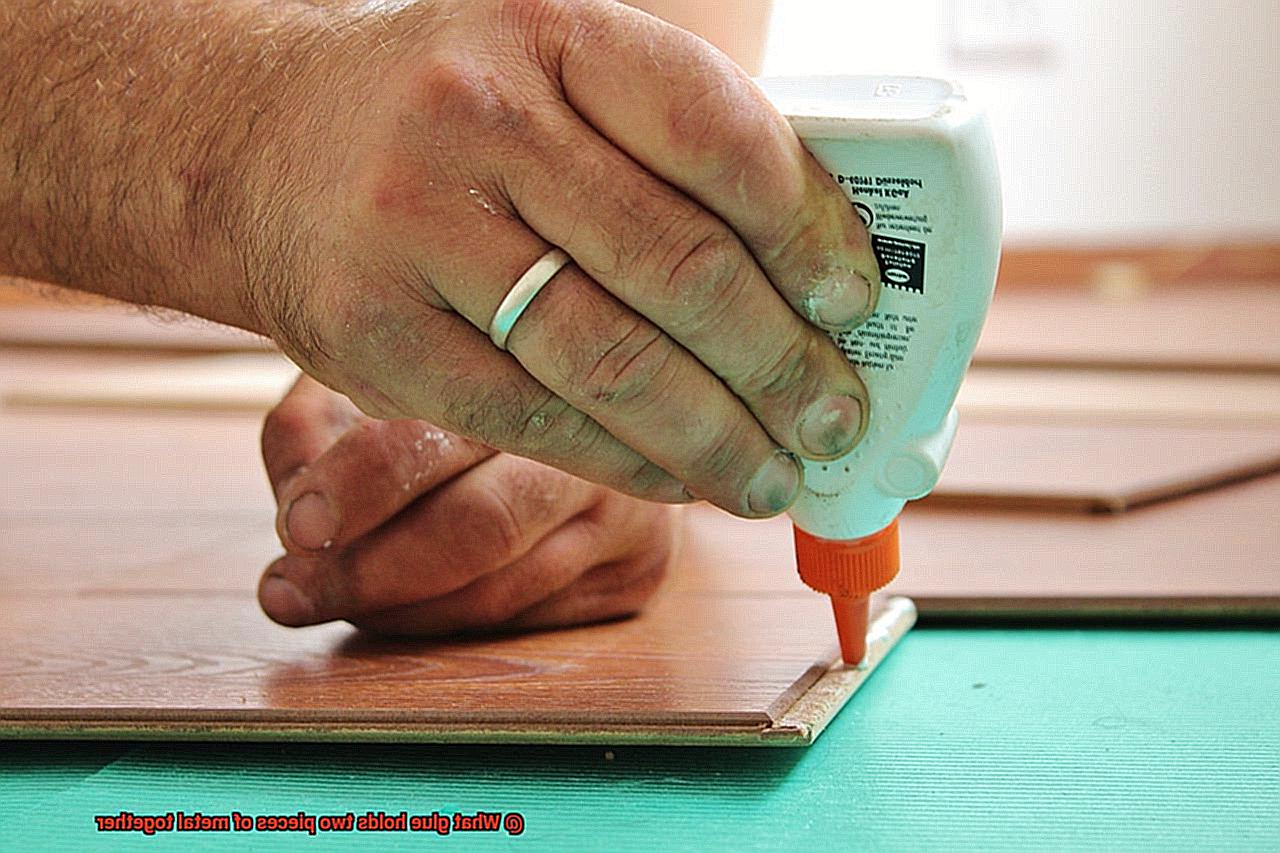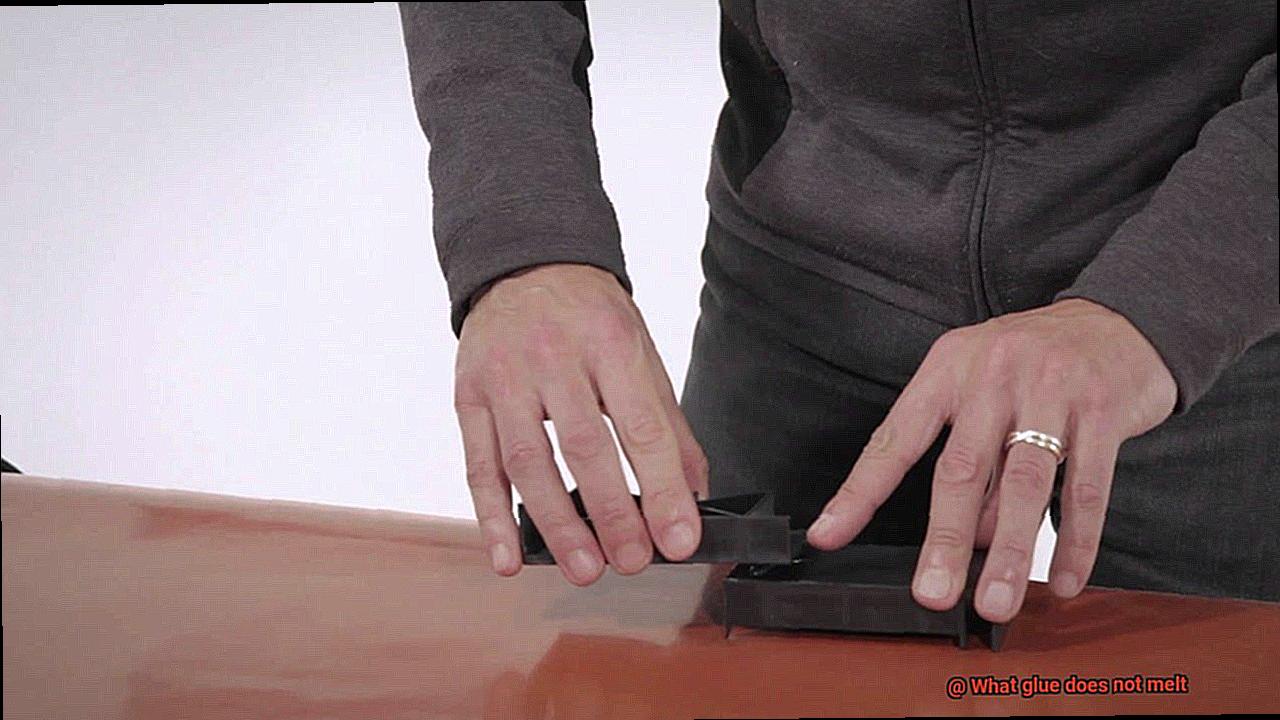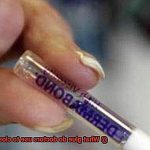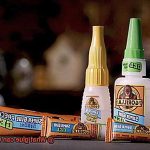When it comes to sticking two pieces of metal together, finding the right glue is crucial for a tough and long-lasting bond. Metal-to-metal bonding requires a special kind of adhesive that can handle all sorts of challenges like heat, moisture, and stress. Luckily, there are plenty of glues out there designed specifically for this job. In this blog post, we’ll explore some of the most popular and effective options for bonding metal and uncover the secrets behind their success.
- Epoxy: If you’re looking for strength and durability, epoxy adhesive is your go-to choice. Made up of two components – resin and hardener – epoxy forms an incredible bond that can withstand almost anything. Once you mix the resin and hardener together, they start a chemical reaction that creates a super-strong connection. Plus, there are different types of epoxy available depending on your needs, like fast-setting or high-temperature resistant.
- Cyanoacrylate (Super glue): Ahh, good old super glue. Known for its lightning-fast bonding abilities, cyanoacrylate adhesive is perfect when you need things done in a hurry. When applied to metal surfaces, this glue reacts with the air’s moisture and instantly creates a strong bond. While it might not be as strong as epoxy in heavy-duty situations, super glue still gets the job done for lighter applications. Just remember to use it on non-porous surfaces.
- Polyurethane: Need something tough enough to handle temperature changes and impacts? Look no further than polyurethane adhesive. This versatile option forms a sturdy bond that can take on whatever comes its way. It’s also great at resisting moisture and can create flexible bonds that work well when movement or vibrations are involved. And the best part? It works with all sorts of metals like aluminum, steel, and copper.
- Acrylic: For those outdoor projects that need endurance against Mother Nature’s wrath, acrylic adhesive is the way to go. This glue has fantastic initial tack and can stand up to extreme temperatures and UV radiation. It’s a reliable choice for bonding metal surfaces, both porous and non-porous. So whether you’re working on a garden sculpture or a bike rack, acrylic glue will keep things stuck together no matter what.

As you can see, the world of metal bonding glues offers a wide range of options to suit your needs. Whether it’s epoxy for sheer strength, cyanoacrylate for speedy bonding, polyurethane for impact
Advantages and Disadvantages of Glue for Metal Bonding
Contents
- 1 Advantages and Disadvantages of Glue for Metal Bonding
- 2 Types of Glue for Metal Bonding
- 3 Epoxy Adhesive for Metal Bonding
- 4 Cyanoacrylate Adhesive for Metal Bonding
- 5 Polyurethane Adhesive for Metal Bonding
- 6 Structural Acrylic Adhesive for Metal Bonding
- 7 Silicone Adhesive for Metal Bonding
- 8 Welding: An Alternative to Glue
- 9 Conclusion
Glue is a versatile and popular choice for bonding metal surfaces, offering a range of advantages. Firstly, its versatility allows for the selection of different types of glue, such as epoxy, cyanoacrylate, polyurethane, and structural acrylic adhesives. Each type has its own strengths, providing flexibility in choosing the right adhesive for specific metal bonding needs.
Moreover, glue is easy to use, eliminating the need for specialized equipment or extensive training. It can be directly applied to metal surfaces, making it suitable for those who prefer simplicity and efficiency. Additionally, glue offers a fast curing time, allowing for quick assembly and reduced production time. This enhances workflow and overall production output.
Aesthetically, glue provides a seamless bond between metal pieces, enhancing the appearance of bonded components. The absence of visible welds or screws is particularly important in industries where aesthetics play a significant role.
Glue also distributes stress more evenly across the bonded area compared to mechanical fasteners, reducing the concentration of stress points. This minimizes the risk of fatigue and failure in the joint, making it advantageous for critical applications.
However, there are also limitations to using glue for metal bonding. Glue may have limited strength compared to traditional welding or mechanical fastening methods. Adhesive strength depends on factors like surface preparation, adhesive type, and environmental conditions.
Glue can also be susceptible to temperature extremes. Some glues may lose their bond strength or even fail under extreme temperatures. Adhesives that can withstand intended operating conditions should be selected for durable bonds.
Proper surface preparation is crucial for achieving a strong and reliable bond with glue. Thorough cleaning, degreasing, and roughening of metal surfaces are necessary for maximum adhesive performance.
Glue may not be suitable for bonding metal pieces with significant gaps or uneven surfaces since it may not effectively fill voids or compensate for irregularities. Gap-filling capabilities should be considered when choosing glue for metal bonding.
Lastly, while glue provides excellent initial bond strength, its long-term durability can vary based on exposure to moisture, UV radiation, or chemical substances. Adhesives specifically designed for the intended application and environment should be selected for long-lasting bonds.
Types of Glue for Metal Bonding
When it comes to joining metal surfaces together, the right adhesive is crucial. Different types of glue offer unique properties and applications for metal bonding. Let’s delve into the top glues used for metal bonding, their strengths, and their applications.
Epoxy Adhesive:
Epoxy adhesive is the superhero of metal bonding. Renowned for its exceptional strength and durability, this glue consists of two components – a resin and a hardener – that must be mixed before use. Once combined, epoxy forms an unbreakable bond capable of withstanding heavy loads and extreme temperatures. Its resilience makes it perfect for industrial applications or repairing metal objects exposed to harsh conditions.
Cyanoacrylate Adhesive (Super Glue):
Super glue, also known as cyanoacrylate adhesive, is the go-to option for quick repairs or bonding small metal parts. It sets rapidly by reacting with moisture in the air. However, it is essential to clean and dry the metal surfaces before applying super glue for optimal adhesion. While it may not offer the same strength as epoxy adhesive, it provides an excellent solution for everyday metal bonding needs.
Polyurethane Adhesive:
Polyurethane adhesive is a versatile choice that effectively bonds metal surfaces. It creates a flexible bond capable of withstanding vibrations and impact, making it ideal for applications where durability is crucial. Additionally, polyurethane adhesive is resistant to water, heat, and chemicals, allowing it to thrive both indoors and outdoors.
Structural Adhesives:
For load-bearing applications, structural adhesives are the heroes we need. These specialized adhesives provide high strength and durability, making them perfect for heavy-duty projects. Often available in two-part formulations that need to be mixed before use, structural adhesives work well on various metals like aluminum, stainless steel, and titanium.
Silicone Adhesive:
Silicone adhesive forms a flexible and waterproof bond capable of withstanding extreme temperatures. It is commonly used in the automotive and aerospace industries, where resistance to heat and chemicals is vital. Whether it’s sealing metal components or creating a watertight seal, silicone adhesive has got you covered.
Epoxy Adhesive for Metal Bonding
Today, we’re going to explore the incredible power of epoxy adhesive when it comes to joining metal surfaces. Prepare to be amazed.
So, what sets epoxy adhesive apart from other glues? Well, for starters, it’s a dynamic duo consisting of resin and hardener. When these two components combine forces, they create a chemical reaction that forms a bond as tough as an ironclad fortress. But that’s not all – epoxy adhesive has the ability to bond different types of metals together, like steel, aluminum, and copper. It’s like a universal superhero for your metal projects.
What makes epoxy adhesive truly extraordinary is its ability to penetrate the microscopic pores and irregularities on metal surfaces. It’s like a secret agent infiltrating enemy territory, ensuring a bond that can withstand even the most extreme conditions. Think heavy loads, impact, and vibration – no match for this superhero glue. And did I mention its resistance to heat, chemicals, and moisture? This stuff is built to withstand the harshest environments known to man.
Now, let’s dive into the nitty-gritty of using epoxy adhesive for metal bonding. The key lies in surface preparation – it’s like prepping for battle. Clean those metal surfaces with precision, removing any dirt, grease, or oxidation that could jeopardize the bonding process. For an extra strong bond, you can roughen up the surface with sandpaper or an acid etching solution – it’s like sharpening your sword.
Once your surfaces are ready for action, apply the epoxy adhesive evenly onto one of the metal surfaces. Then, with the grace of a master craftsman, place the second piece of metal onto the adhesive-coated surface. Make sure everything is aligned perfectly – precision is key. Apply a touch of pressure to enhance contact between the adhesive and the metal surfaces – it’s like sealing a pact with a firm handshake.
The epoxy adhesive needs time to reach its full strength and unleash its superpowers. The exact curing time depends on factors like temperature and humidity, so follow the manufacturer’s instructions for optimal results. Trust me, it’ll be worth the wait.
Cyanoacrylate Adhesive for Metal Bonding
When it comes to metal bonding, cyanoacrylate adhesive is the superhero you need. This mighty adhesive, also known as super glue, offers a range of advantages that will leave you in awe.
First and foremost, cyanoacrylate adhesive provides exceptional adhesion to a wide range of metals. Whether you’re working with steel, aluminum, brass, or copper, this adhesive has got you covered. Its versatility makes it suitable for a variety of metal bonding applications.
But that’s not all. Cyanoacrylate adhesives also boast a high shear strength. This means they can handle heavy loads without breaking a sweat. So you can rest easy knowing that your metal bonds will stay intact even under stress.
One of the most impressive features of cyanoacrylate adhesives is their ability to bond dissimilar metals. That’s right – you can use the same adhesive to join different types of metals together. Whether you’re joining steel to aluminum or brass to copper, cyanoacrylate adhesive has your back.
Of course, achieving a successful bond requires proper surface preparation. Before applying the adhesive, make sure the metal surfaces are clean and free from any dirt, oil, or grease. A little bit of sanding or using an abrasive can also help roughen the surface, enhancing the adhesive’s bond strength.
When it comes to application, less is more. Apply a thin and even layer of cyanoacrylate adhesive to one of the surfaces. Then press the two metal surfaces firmly together and hold them in place until the adhesive sets. Follow the manufacturer’s instructions for curing time, as it may vary depending on the specific adhesive being used.
Polyurethane Adhesive for Metal Bonding
In the realm of metal bonding, polyurethane adhesive reigns supreme as a true superhero. Its extraordinary strength, versatility, and resistance to environmental factors make it the go-to choice for those seeking robust and enduring bonds. This article delves into the advantages of using polyurethane adhesive for metal bonding, while providing step-by-step instructions to ensure exceptional results.
Advantages of Polyurethane Adhesive for Metal Bonding:
Versatility:
Polyurethane adhesive possesses the unique ability to bond various types of metals together, including steel, aluminum, brass, and copper. Its versatility makes it the ideal adhesive for a wide range of metal bonding applications.
Excellent Resistance:
This remarkable adhesive exhibits exceptional resistance to temperature extremes, moisture, and chemicals, rendering it suitable for both indoor and outdoor applications. It can withstand even the harshest environmental conditions, delivering long-lasting bonds that remain stable over time.
Flexibility:
Polyurethane adhesive boasts a level of flexibility that allows it to absorb vibrations and impact forces. This reduces the risk of joint failure caused by mechanical stress, making it perfect for applications where bonded metal surfaces may experience movement or dynamic loads.
Steps to Ensure a Strong Bond:
Surface Preparation:
Proper surface preparation is vital for optimal adhesion. Thoroughly clean the metal surfaces, ensuring they are free from dust, grease, and other contaminants that could impede the bonding process. Additionally, roughening the surfaces with sandpaper or applying a suitable primer can enhance bond strength.
Two-Part System:
To achieve optimal results, it is recommended to employ a two-part polyurethane adhesive system consisting of a base and an activator. Mix these two components in the specified ratio before applying them onto the metal surfaces using a brush, roller, or dispenser. Ensure even distribution and allow sufficient time for curing, following the manufacturer’s instructions.
Curing Time:
Once applied, the adhesive requires ample time to cure and form a robust bond between the metal surfaces. The curing time may vary depending on factors such as metal type, surface preparation, and curing conditions. It is vital to adhere to the manufacturer’s guidelines for optimal results.
Structural Acrylic Adhesive for Metal Bonding
When it comes to bonding metals, you need a glue that’s as tough as nails. Enter structural acrylic adhesive – the superhero of metal bonding. This high-strength adhesive offers numerous advantages that make it the go-to choice for industrial applications. Let’s dive into the world of structural acrylic adhesive and discover why it’s a game-changer in metal bonding.
Versatile Bonding:
Structural acrylic adhesive is a true metal matchmaker. It forms robust bonds between different types of metals, be it steel, aluminum, or copper. Say goodbye to drilling holes or using rivets – this adhesive creates seamless connections that not only look clean but also provide exceptional strength.
Endurance against Environmental Factors:
Metal bonds face an array of challenges, from temperature fluctuations to moisture and chemicals. Luckily, structural acrylic adhesive stands strong against these obstacles. Its resistance to environmental factors ensures that your metal bonds remain intact, whether they’re exposed to scorching sun or corrosive substances.
Rapid Curing Times:
Time is money, and structural acrylic adhesive understands that. Unlike other glues that take ages to cure, this adhesive works at lightning speed. It achieves full strength within minutes, allowing for efficient production processes and reducing assembly time. Get ready to witness increased productivity.
Flexible Application Methods:
Structural acrylic adhesive adapts to your needs like a chameleon. Whether you prefer liquid application or pre-cut tapes and films, this adhesive offers versatility in its application methods. Seamlessly integrate it into your manufacturing processes without breaking a sweat.
Gap-Filling Expertise:
Uneven surfaces and varying thicknesses can be a challenge when bonding metals. Structural acrylic adhesive rises to the occasion with its exceptional gap-filling capabilities. It fills small gaps and surface irregularities, ensuring a strong and uniform bond. Rest easy knowing that even the most imperfect surfaces will be flawlessly united.
Silicone Adhesive for Metal Bonding
In the realm of metal bonding, one adhesive emerges as the ultimate superhero – silicone adhesive. With its exceptional adhesion properties, flexibility, thermal stability, and electrical insulation capabilities, silicone adhesive reigns supreme in the world of metal bonding. Let’s explore the advantages that make silicone adhesive the go-to choice for this application.
Unyielding Adhesion Properties:
Silicone adhesive creates a formidable seal between metal surfaces, guaranteeing a robust and reliable bond. Its resistance to moisture, chemicals, and temperature fluctuations makes it ideal for diverse environments. Whether it’s bonding metals in a marine setting or an industrial facility, silicone adhesive ensures a long-lasting and secure attachment.
Flexibility that Saves the Day:
Unlike its counterparts, silicone adhesive remains resilient even when subjected to movement and vibrations. This attribute is vital in applications where bonded metal parts experience stress or strain, as seen in the automotive or aerospace industries. No matter how much your metal components move or vibrate, silicone adhesive will hold them together steadfastly.
Heat Resistance that Conquers All:
Silicone adhesive fearlessly endures high temperatures without compromising its bond strength. This makes it a stellar choice for applications where bonded metal parts are exposed to heat or fluctuating temperatures. Whether you’re bonding metals in a furnace or constructing an outdoor structure, silicone adhesive possesses unwavering resilience.
Electrical Insulation Superpowers:
For electronic devices and electrical equipment, maintaining proper insulation is paramount. Silicone adhesive excels in providing excellent electrical insulation properties, preventing electrical current leakage between bonded metal surfaces. Entrusting your devices to silicone adhesive ensures their safety and soundness.
Welding: An Alternative to Glue
When it comes to bonding two pieces of metal together, glue may not always be the best option. That’s where welding comes in, offering a strong and durable alternative that can withstand extreme conditions and provide long-lasting connections. Let’s delve into the world of welding and explore why it is the superhero of metal bonding.
First and foremost, welding is known for its incredible strength and durability. Welded joints are often stronger than the base metals themselves, providing structural integrity and longevity to the assembled components. Imagine the Hulk holding two pieces of metal together – that’s the strength you get with welding. It can withstand high levels of stress, temperature variations, and external forces, making it ideal for applications where toughness is essential.
Versatility is another superpower of welding. It allows for the joining of various types of metals, including steel, aluminum, copper, and titanium. Glue, on the other hand, may not be suitable for bonding certain types of metals due to their chemical properties. With welding, you have a team of Avengers working together, regardless of their differences in composition.
Precision is a skill that only true heroes possess, and welding is no exception. It enables precise control over the size and shape of the joint, ensuring a tight fit between the metal pieces. This level of precision is not always achievable with glue, which may result in uneven bonding or gaps between the parts. With welding, you can achieve a seamless connection that would make even Iron Man proud.
However, every superhero has its weaknesses. Welding requires specialized equipment and skills to perform effectively and safely. Proper safety measures must be followed to protect against potential hazards such as heat exposure and fumes generated during the welding process. But with great power comes great responsibility, so it’s crucial to have the right training and equipment to wield this powerful tool.
Another weakness of welding is its permanence. Unlike glue, which allows for disassembly or repair, welding creates a bond that is difficult to reverse. In certain applications where flexibility is required, glue or other mechanical fasteners may be a better choice. But when you need a bond that can stand the test of time, welding is the ultimate solution.
w-iHL3tN__A” >
Also Read: How to Glue Metal to Glass?
Conclusion
When it comes to bonding two pieces of metal together, finding the right glue is crucial. You need a strong adhesive that can withstand the forces and stresses that metal surfaces endure. Fortunately, there are several options available that can get the job done.
One popular choice is epoxy adhesive. This versatile glue forms a durable bond between metal surfaces, providing excellent strength and resistance to temperature changes. Its ability to fill gaps and create a tight seal makes it ideal for various metal applications.
Another reliable option is cyanoacrylate adhesive, commonly known as super glue. This fast-acting adhesive creates an instant bond between metal surfaces, making it perfect for quick repairs or small projects. However, it may not be as effective on larger or load-bearing connections.
For more specialized applications, you might consider using structural adhesives such as polyurethane or acrylic adhesives. These high-strength glues provide exceptional durability and can withstand extreme conditions like vibrations or impact.
When choosing a glue for metal bonding, it’s essential to consider factors such as the type of metals being joined, the environment in which they will be used, and the required strength of the bond. Testing different adhesives on scrap pieces of metal before committing to a project can help ensure success.
In conclusion, finding the right glue to hold two pieces of metal together requires careful consideration and understanding of your specific needs. Whether it’s epoxy adhesive for its versatility or cyanoacrylate adhesive for quick fixes, there are various options available that can provide a strong and lasting bond.






